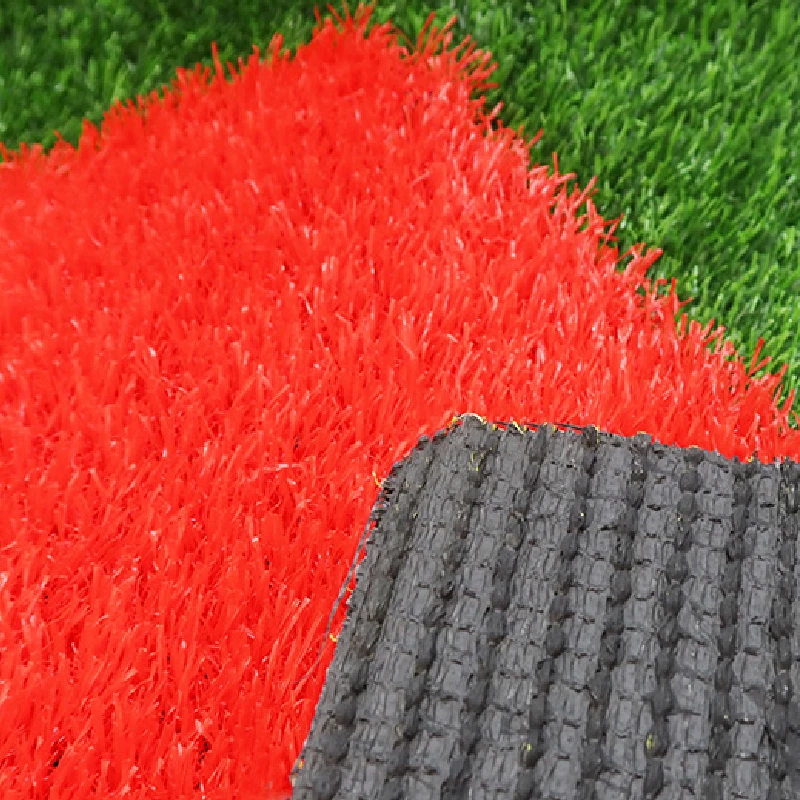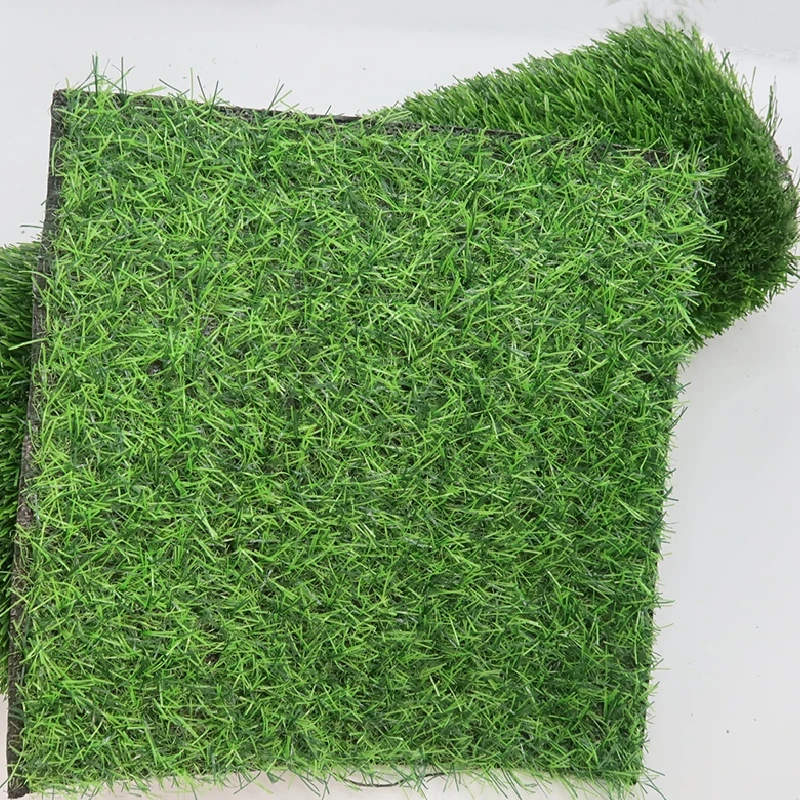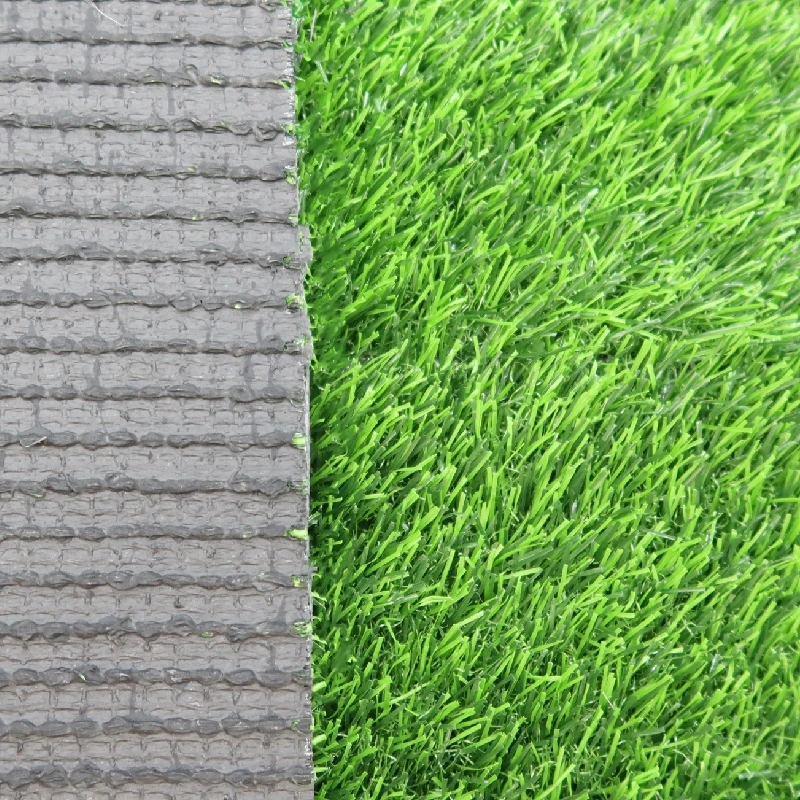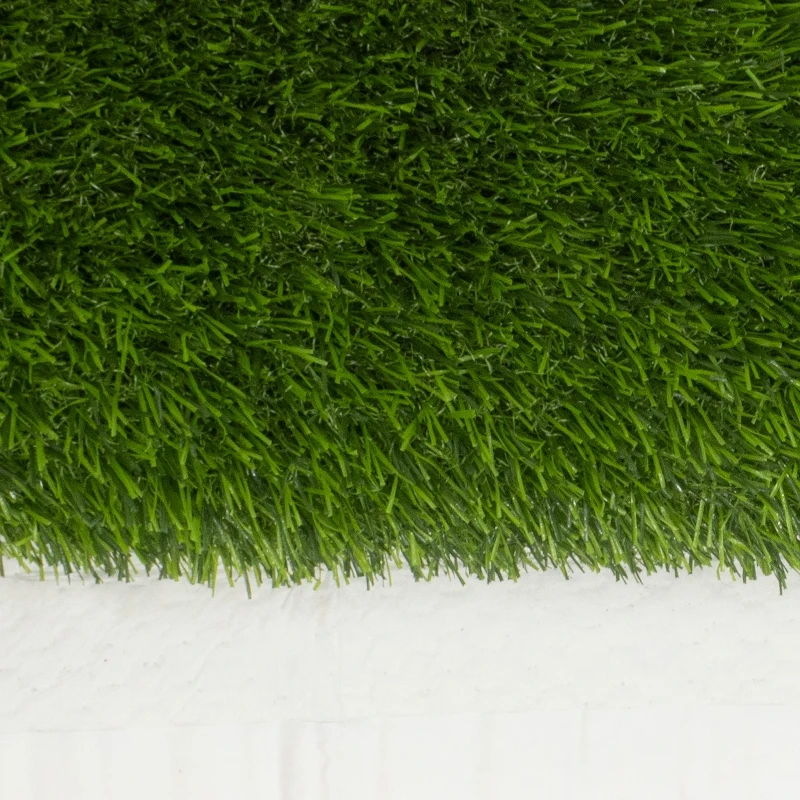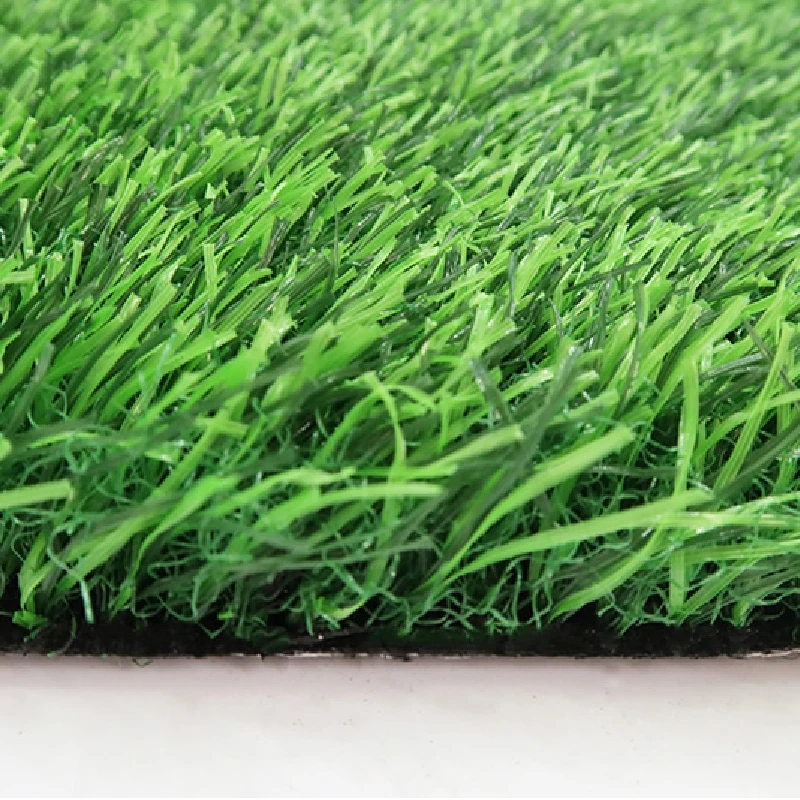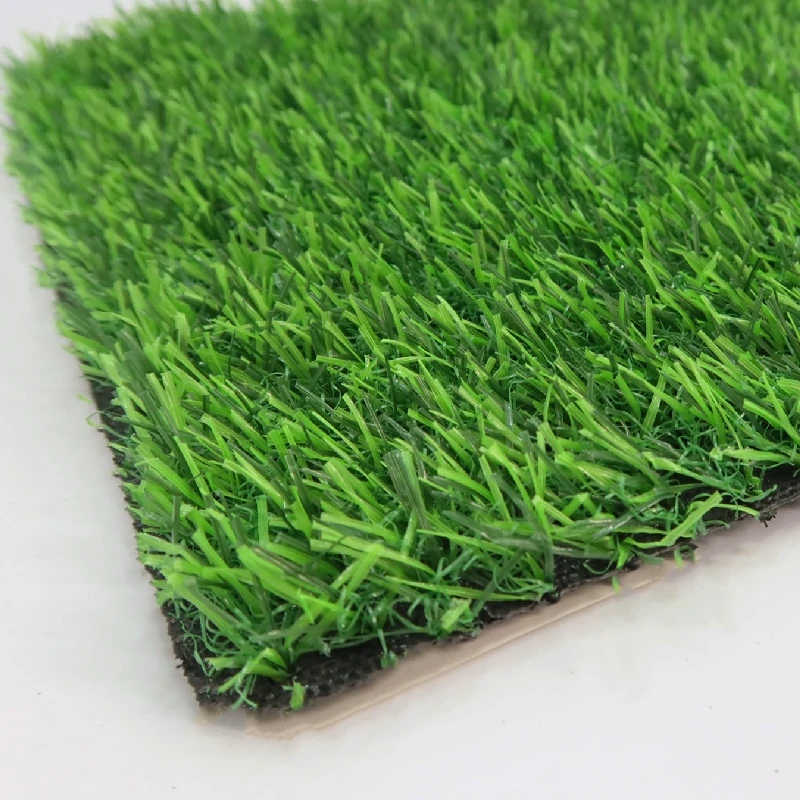Turf Front Yard Solutions for Sustainable and Low-Maintenance Homes
Nov . 23, 2025 23:00 Back to list
Understanding the Turf Front Yard: Why It Matters More Than You Think
When we talk about a turf front yard, it’s often in the context of neat suburban homes, the kind of front lawns you see in magazines or community blogs. But the truth is, turf—whether natural or synthetic—is becoming a global symbol for sustainable landscaping, urban planning, and even environmental resilience. As cities grow and water resources tighten, a green, practical front yard isn’t just about curb appeal anymore; it’s deeply connected to ecological health, community wellbeing, and smart space usage.
Globally, replacing traditional grass or bare soil with well-chosen turf solutions can save thousands of gallons of water per year, reduce urban heat island effects, and provide habitats for pollinators. If you're imagining a small patch of greenery, think bigger: turf front yards are part of a broader movement to innovate how we manage outdoor living spaces — and, frankly, that’s exciting.
Mini takeaway: Turf front yards matter globally because they blend environmental responsibility with everyday living, conserving resources while enhancing quality of life.
The Global Context: Why Turf Front Yards Are Gaining Momentum
Water scarcity is rapidly becoming one of the top global concerns according to the United Nations (UN), with over two billion people living in water-stressed regions. Also, the World Bank notes accelerating urban expansion — which often leads to more paved surfaces and hardscapes — causing heat retention and stormwater runoff problems. In response, using turf in front yards, especially drought-resistant or synthetic varieties, helps alleviate some urban environmental stress.
Moreover, according to ISO sustainability protocols, green landscaping plays a vital role in carbon sequestration and air quality improvement. Yet, drought-resistant turf or synthetic grass offers a potential solution to cities and homeowners concerned about lawn upkeep under changing climate conditions.
But the challenge remains: how do you balance aesthetics, ecology, and cost effectively? Turf front yard solutions are designed exactly for that.
Mini takeaway: Turf front yards respond to urgent global challenges around water scarcity, urban heat, and green living, proving they're more than just a pretty face in landscaping.
What Exactly is a Turf Front Yard?
Simply put, a turf front yard refers to the use of grass—natural or synthetic—to cover the front outdoor space of a residence or building. Unlike bare earth or concrete, turf provides a soft, green surface that enhances curb appeal and environmental benefits.
Natural turf is the lush grass many of us picture, but with increasing water and maintenance needs. Synthetic turf, made from durable polymers, replicates this look with minimal upkeep. Both options serve modern needs: creating livable, inviting spaces that also help regulate temperature, prevent erosion, and support local biodiversity (if natural).
In contexts from urban neighborhoods to relief housing projects, turf front yards offer practical solutions for beautification and sustainability. They also intersect with humanitarian needs by stabilizing soils in vulnerable regions and offering recreational surfaces in temporary or permanent settlements.
Mini takeaway: Turf front yards are not just lawns; they're practical, technical solutions adapted to current social and environmental demands.
Core Components of Turf Front Yard Success
1. Durability
Whether natural or synthetic, turf must withstand foot traffic, weather fluctuations, and sometimes pets or kids running around. Synthetic turf often excels here, maintaining appearance for years without the browning that natural lawns suffer.
2. Water Efficiency
Natural turf typically requires considerable watering, a major concern in arid regions. Synthetic options, meanwhile, use zero water, reducing residential water footprints drastically.
3. Maintenance Needs
Natural turf demands mowing, fertilizing, and pest control. Synthetic turf cuts most of that out — no mowing, no chemicals. Though initial costs can be higher, long term effort is lower.
4. Environmental Impact
Natural turf helps absorb CO2 and supports insects and soil organisms. Synthetic turf has a carbon footprint from manufacturing but avoids water use and chemical runoff.
5. Aesthetic Flexibility
Turf can be customized—different textures, colors, and patterns are possible, especially with synthetic turf offerings, helping homeowners capture their exact vision.
6. Cost Efficiency
Depending on material choices and local climate, turf front yards offer variable upfront versus long-term savings, often tipping the balance in favor of synthetic turf in extreme water stress zones.
Mini takeaway: Key turf front yard factors include durability, maintenance, environmental balance, and cost — all pivotal for choosing the right solution.
How Turf Front Yards Are Used Around the World
In Mediterranean and Southwestern US regions, drought-resistant natural turf varieties dominate, balancing greenery with minimal water. In Australia, synthetic turfs are prevalent in urban areas where water restrictions hit hard.
Urban planners in Europe and Japan incorporate turf front yards into green corridors, blending private and public green spaces to cool cities naturally. In humanitarian relief zones, quick-install synthetic turf front yards provide safe play spaces for children displaced by disasters, simultaneously stabilizing dusty grounds.
Consider the case of a community in Southern California, where synthetic turf replaced traditional lawns, cutting water use by more than 50%, and won local government rebates for sustainable landscaping upgrades.
Mini takeaway: Turf front yards are globally versatile—from dry climates to disaster zones—contributing to local ecology, water savings, and human wellbeing.
Advantages and Long-Term Value of Turf Front Yards
- Cost Savings: Reduced water and maintenance costs can be substantial.
- Sustainability: Supporting biodiversity (natural turf) and resource conservation (synthetic turf).
- Enhanced Safety & Livability: Safe play surfaces reduce injury risks and foster community spirit.
- Visual Appeal: A crisp green front yard boosts property value and neighborhood pride.
- Innovation & Trust: Modern turf products incorporate recycled materials and UV protection, adding confidence in durability.
Emotionally, knowing your front yard supports the environment while giving your home a fresh, inviting look is rare. It’s like a small daily win for both you and the planet.
Product Specification Table: Sample Turf Front Yard Solutions
| Specification | Natural Turf | Synthetic Turf |
|---|---|---|
| Water Usage | High (weekly irrigation) | Zero |
| Maintenance | Mowing, fertilizing | Occasional brushing, cleaning |
| Durability | 3-5 years typical | 10-15 years typical |
| Environmental Impact | Supports ecosystem | No water saving, uses plastics |
| Installation Time | 1-2 weeks (including soil prep) | 2-4 days (no soil prep needed) |
Comparing Leading Turf Front Yard Vendors
| Vendor | Product Types | Warranty | Sustainability | Price Range |
|---|---|---|---|---|
| GreenScape Naturals | Drought-resistant natural grasses | 5 years (with maintenance) | Organic fertilizers, low water use | $$ |
| EverGreen Turf | High-grade synthetic turf | 10 years | Uses recycled plastics, low runoff | $$$ |
| UrbanRoots Solutions | Hybrid turf blends | 7 years | Partial recycled content, low water | $$ |
What’s on the Horizon? Future Trends in Turf Front Yard Design
As we move deeper into the 2020s, turf front yards are embracing smarter, greener changes. Innovations like solar-powered irrigation systems paired with drought-tolerant turf reduce human involvement and resource waste. Additionally, more companies are designing synthetic turf made from biodegradable polymers, aiming to mitigate plastic pollution concerns.
Digital landscaping tools are also helping homeowners visualize turf choices, allowing for virtual trials before investment. Automation and integrated sensors will soon monitor turf health and watering needs in real time, creating a seamless green experience based on 'smart home' principles.
Lastly, policy shifts towards sustainable city certifications (think LEED or WELL) will increasingly favor homes and businesses that incorporate resource-savvy turf solutions, intertwining turf front yards into urban future dreams.
Mini takeaway: The future turf front yard is tech-enabled, eco-conscious, and part of a larger sustainability mindset shifting residential landscaping.
Common Challenges & Smart Solutions
There are hurdles — like upfront costs, concerns about microplastics from synthetic turf, or the maintenance needs of natural grass in drought zones. Many homeowners worry about appearance fading or installation durability.
To combat these, experts recommend:
- Choosing local or regional turf varieties to suit climate naturally.
- Considering hybrid turf blends that mix synthetic fibers with real grass for balance.
- Using professional installation to avoid drainage problems which shorten turf lifespan.
- Adopting maintenance plans focused on soil health and watering efficiency, with emerging AI tools guiding when and how much to irrigate.
It's a bit like gardening meets tech, and those willing to learn reap rewards quickly.
FAQ: Frequently Asked Questions About Turf Front Yard
- What is the difference between natural and synthetic turf in front yards?
- Natural turf offers an authentic ecosystem supporting biodiversity but requires regular watering and maintenance. Synthetic turf looks similar but demands less upkeep and no water, lasting longer especially in drought-prone areas.
- Is synthetic turf safe for children and pets?
- Modern synthetic turf products are designed with child-safe materials that resist heat retention and provide cushioning, making them safe for play. Pet-friendly variations also prevent stains and reduce odors.
- How long does it take to install a turf front yard?
- Natural turf installation, including soil prep, often takes 1-2 weeks. Synthetic turf can be installed much faster, sometimes within 2-4 days, as it doesn’t require soil cultivation.
- Can turf front yards really help conserve water?
- Absolutely. Switching from traditional grass to drought-resistant or synthetic turf can reduce watering needs by 50-100%, depending on local climate and maintenance.
- Are turf front yards eco-friendly?
- Natural turf supports ecosystems and carbon capture but requires resources like water and fertilizers. Synthetic turf helps conserve water but involves plastics; however, advances in recycled materials and biopolymers are increasing eco-friendliness.
Wrapping Things Up: Why You Should Consider a Turf Front Yard Today
Whether you’re driven by saving water, lowering maintenance, supporting biodiversity, or just having a standout home exterior, a turf front yard offers a solid, practical solution. It’s a blend of nature and innovation that’s becoming vital as we rethink our relationship with outdoor spaces.
Explore your options, talk to local experts, and see how the right turf choice can transform your home and your impact on the environment. Visit our website to learn more and get started.
References
-
Durable, Eco-Friendly Turf for Balcony | Enhance Your Urban Space
NewsNov.24,2025
-
Turf Between Pavers: Sustainable Green Paving Solutions for Modern Urban Spaces
NewsNov.24,2025
-
Discover the Benefits of Turf and Pavers Backyard | Sustainable Outdoor Design
NewsNov.24,2025
-
Top Quality Artificial Grass – Sustainable, Durable, and Stylish Turf Solutions
NewsNov.24,2025
-
Durable and Eco-Friendly Thick Artificial Grass Solutions | Hoya Grass
NewsNov.24,2025
-
Synthetic Turf: Sustainable Green Solutions for Sports, Industry & Urban Living
NewsNov.24,2025
Products categories



